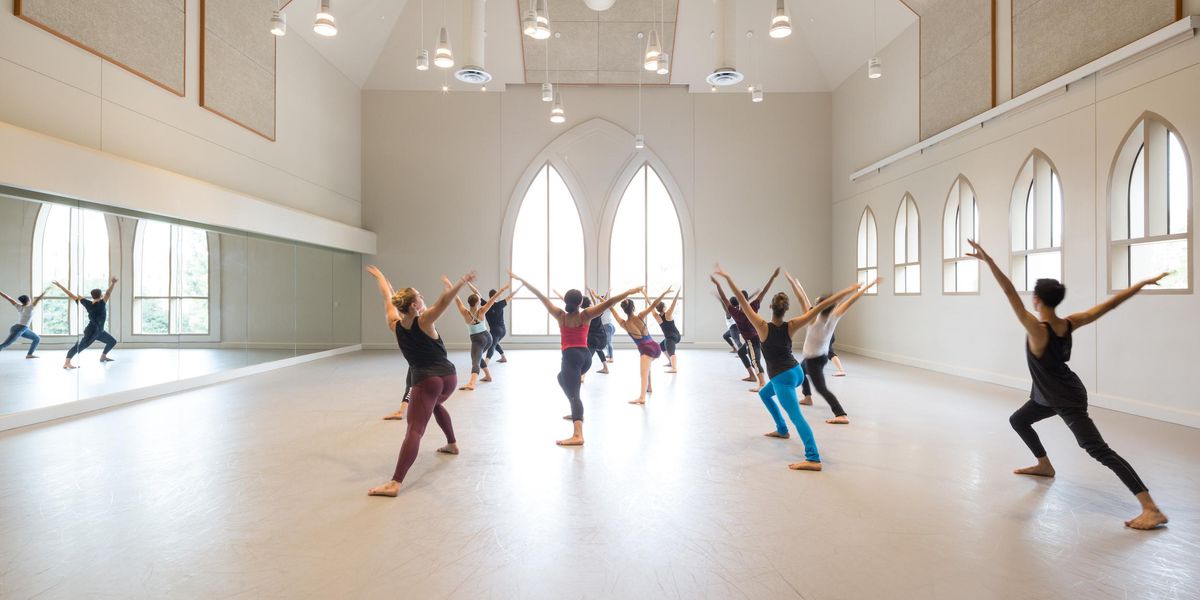In Training: Make This Your Best Year Yet
Set yourself up for success.
Reviewing last year’s high and low points helps you create new goals. Here: Ballet at Point Park. Photo courtesy Point Park.
Most people make resolutions at the turn of the New Year. But for dancers, September, the beginning of a training and performance season, is a chance to start fresh. Take this time to reset your mind and body. How you begin 2015–16 will set the tone for the rest of the year.
Ease Your Way In
The sudden intensity of the beginning of the dance year is often a big cause of injury. The best way to prevent it is to spend the last two weeks of summer break working on strength and alignment through Pilates or Gyrotonic and cardio, says Annette Karim, a Los Angeles–based dance teacher, physical therapist and orthopaedic clinical specialist. Meanwhile, start your dance regimen with one-third of the number of dance classes you’ll be taking. “And take a lower level to work on fundamentals,” says Karim. “It’s nice to get a fresh view on the simple things.”
Check in with your body and address anything that feels “off.” Karim recommends seeing a physical therapist for a pre-season screening. The PT can give you exercises that will combat weak or uneven muscle strength to help ward off injury as the year becomes more rigorous. And they can help you break down technical goals, like finally nailing that triple turn, by identifying anything physical that’s holding you back.
Get Your Head In the Game
Now is the perfect time to set new goals. Start by reviewing last year’s high and low points. Don’t dwell on past disappointments, but ask yourself if the experiences reveal actions you can take to improve. Rubén Graciani, chair of dance and associate director of the Conservatory of Performing Arts at Point Park University, has his students write an essay at the beginning of each semester, evaluating where they feel their training is and what they’d like to accomplish.
Your goals for the year ahead “should be something that you can control, like being more focused during class or having a good school-work-life balance.
That’s more effective than an outcome, like getting a certain role,” says Dr. Sharon Chirban, a Boston-based dance psychologist. “Being more engaged during class might mean showing up 15 minutes early, making sure your nutrition is good or keeping a notebook where you write down anything that you’re stressed about before class, so you can leave it behind.”
Finally, make goals that are several years out. “Long-range dreams, like joining a company or dancing on Broadway, help you to be clear about the choices you’re making in your training, like whether you need to get into more contemporary classes,” says Graciani.
Keep It Going—All Year Long
Setting aside time to regularly reflect on your work and meet with teachers and mentors will help you stay accountable past the fall quarter. “Teachers create a syllabus for the year. Dancers can do the same,” says Karim. “If my homework was to do one exercise every day before class, did I do that? Did I get enough water and food each day? Did I work on spotting?”
Training journals can help you track your progress. They also help you identify when you’re being too critical. “Be really conscious of that negative self-talk,” says Interlochen Arts Academy teacher Rachel James. “Remember that if you were talking to someone else about their work, you would be encouraging.”
Embrace your achievements throughout the year—even the small ones. “Dancers change in tiny increments and can sometimes get very critical about not already being where they want to be,” says Chirban. “It takes a lot of mental work just to let yourself be where you are.”
Don’t Make These All-Too-Common Season-Starter Mistakes
Jumping in too fast, then overtraining to make up for lost time
: “Some dancers think more is better. So they’ll try to take three pointe classes in a row, and they get hurt,” says PT Annette Karim. Increase activity gradually to keep your body safe.
Becoming complacent based on last year’s triumphs
: “Some students rely on past success, assuming that since you got a solo part last year, you’re on this trajectory and it’s going to stay that way,” says Point Park chair of dance Rubén Graciani. “Last year’s success was the result of a lot of hard work, but it requires more to keep going.”
Neglecting sleep, nutrition and downtime
. “Day three is when that lactic acid kicks in,” says Interlochen’s Rachel James. “When you’re sore, you’ve got to take care of yourself.” The beginning of the year is the time to live on your foam roller.
Worrying about things you can’t control
. Many outside factors—worries about casting, technique levels and if teachers are noticing you—can distract you from your goals. “It creates stress and takes the fun out of dancing,” says psychologist Sharon Chirban. Focus on yourself, not others’ progress, and remember why you love to dance. —AR




